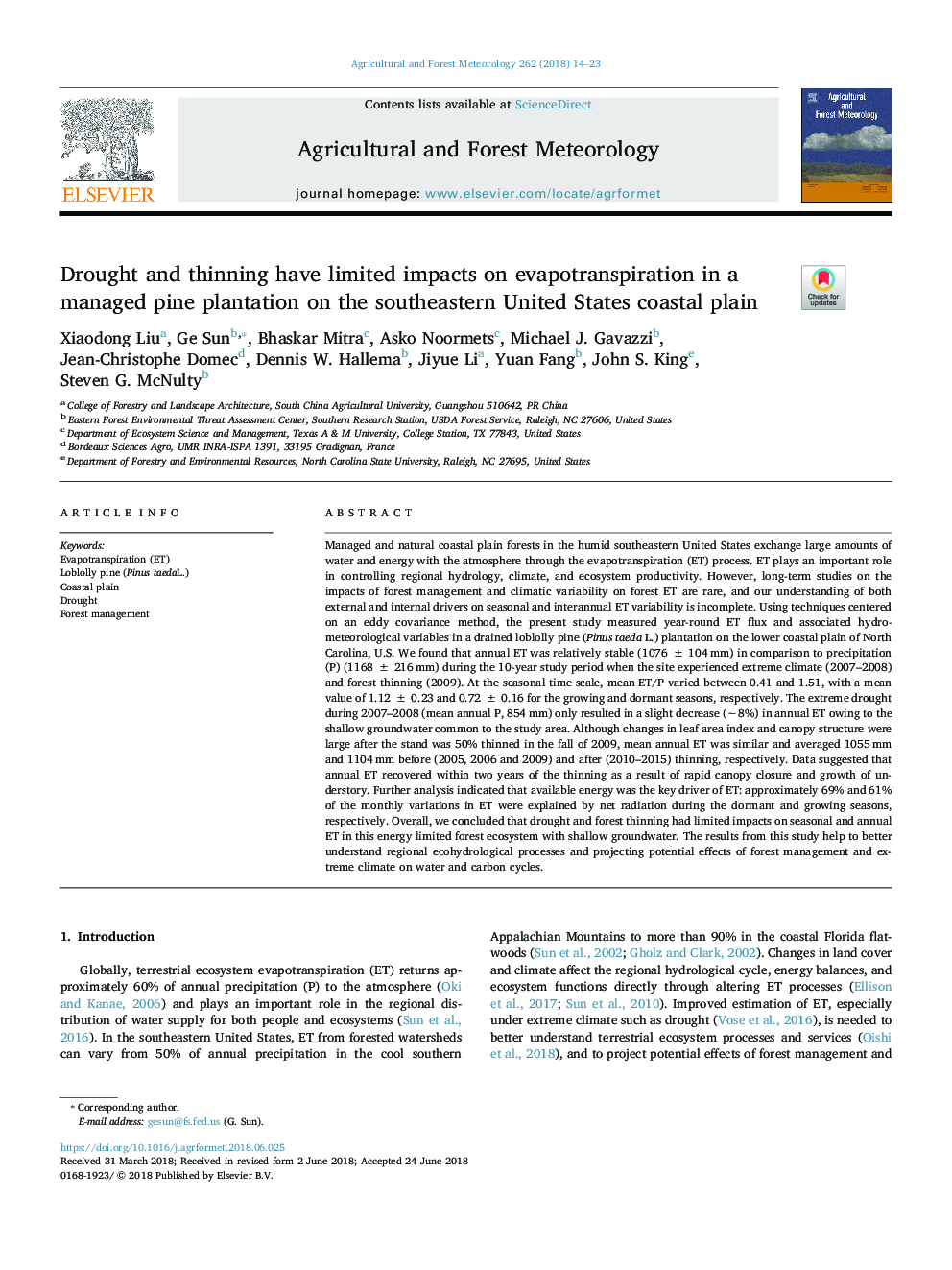| Article ID | Journal | Published Year | Pages | File Type |
|---|---|---|---|---|
| 6536561 | Agricultural and Forest Meteorology | 2018 | 10 Pages |
Abstract
Managed and natural coastal plain forests in the humid southeastern United States exchange large amounts of water and energy with the atmosphere through the evapotranspiration (ET) process. ET plays an important role in controlling regional hydrology, climate, and ecosystem productivity. However, long-term studies on the impacts of forest management and climatic variability on forest ET are rare, and our understanding of both external and internal drivers on seasonal and interannual ET variability is incomplete. Using techniques centered on an eddy covariance method, the present study measured year-round ET flux and associated hydrometeorological variables in a drained loblolly pine (Pinus taeda L.) plantation on the lower coastal plain of North Carolina, U.S. We found that annual ET was relatively stable (1076â¯Â±â¯104â¯mm) in comparison to precipitation (P) (1168â¯Â±â¯216â¯mm) during the 10-year study period when the site experienced extreme climate (2007-2008) and forest thinning (2009). At the seasonal time scale, mean ET/P varied between 0.41 and 1.51, with a mean value of 1.12â¯Â±â¯0.23 and 0.72â¯Â±â¯0.16 for the growing and dormant seasons, respectively. The extreme drought during 2007-2008 (mean annual P, 854â¯mm) only resulted in a slight decrease (â¼8%) in annual ET owing to the shallow groundwater common to the study area. Although changes in leaf area index and canopy structure were large after the stand was 50% thinned in the fall of 2009, mean annual ET was similar and averaged 1055â¯mm and 1104â¯mm before (2005, 2006 and 2009) and after (2010-2015) thinning, respectively. Data suggested that annual ET recovered within two years of the thinning as a result of rapid canopy closure and growth of understory. Further analysis indicated that available energy was the key driver of ET: approximately 69% and 61% of the monthly variations in ET were explained by net radiation during the dormant and growing seasons, respectively. Overall, we concluded that drought and forest thinning had limited impacts on seasonal and annual ET in this energy limited forest ecosystem with shallow groundwater. The results from this study help to better understand regional ecohydrological processes and projecting potential effects of forest management and extreme climate on water and carbon cycles.
Related Topics
Physical Sciences and Engineering
Earth and Planetary Sciences
Atmospheric Science
Authors
Xiaodong Liu, Ge Sun, Bhaskar Mitra, Asko Noormets, Michael J. Gavazzi, Jean-Christophe Domec, Dennis W. Hallema, Jiyue Li, Yuan Fang, John S. King, Steven G. McNulty,
